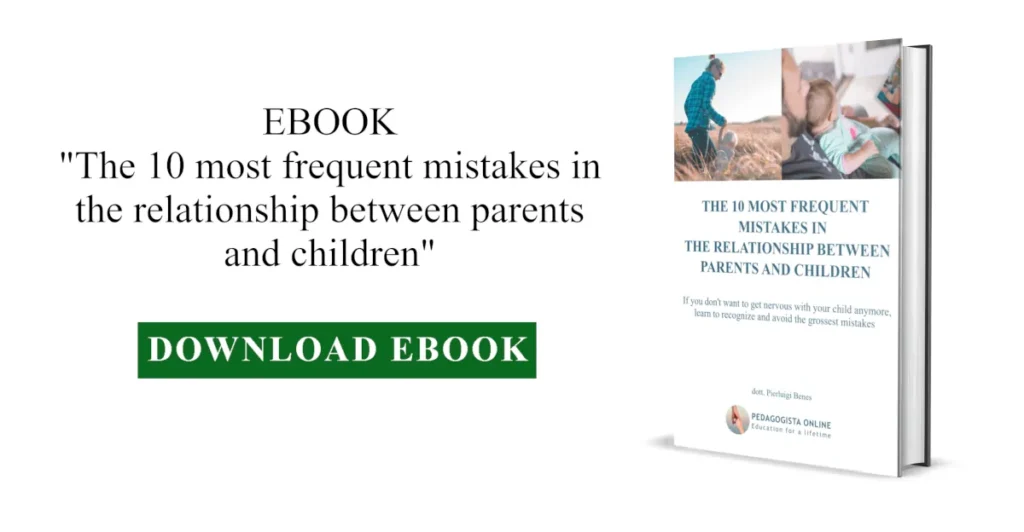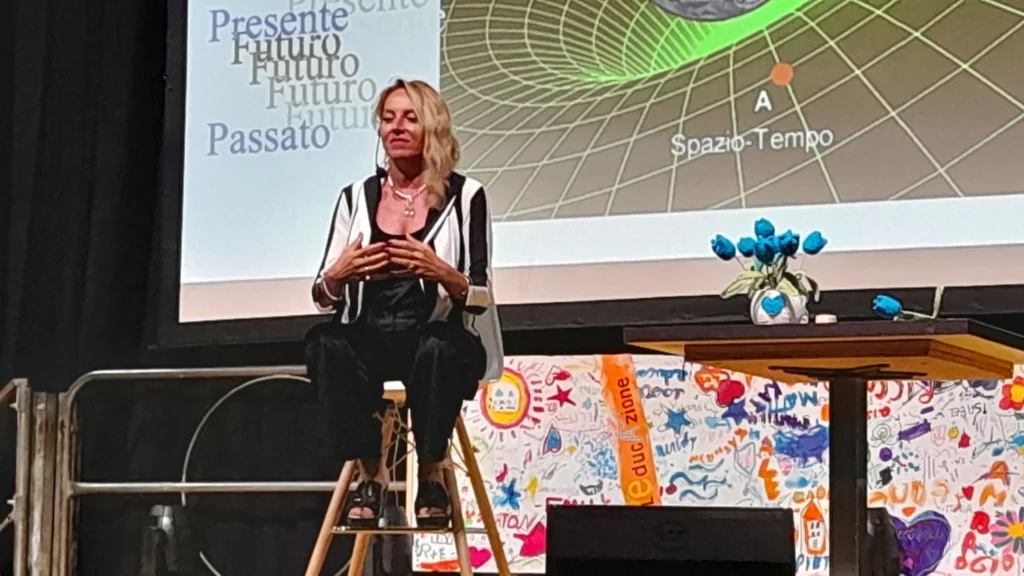Roby often finds himself forgetting things he just learned. Perhaps it’s because he generally reads and memorizes what he can until nothing more sticks in his mind. Yet, some of his other friends can learn very well using this method.
You fear that your child may have learning difficulties, but actually, it’s likely that he’s just using his potential in an improper way.
This approach to studying may work for about one-fifth of the population. And the others? Reading and repeating is not very helpful for them; they need to use different learning channels, as I will explain.
Unfortunately, schools don’t do much to help students personalize their study methods based on their individual characteristics, and they often tend to promote the classic method of reading and repeating, which only works for some cases.
If you want to understand how to learn quickly and help your child improve their academic performance, the following guidelines will be very helpful:
1. How the human mind learns
I assume you already know what to do to create the best conditions for studying, such as setting goals, preparing mentally and physically, etc.; in case you need it, you can find some information on these aspects on this website. Instead, I will now explain in a simple and precise way how learning works in the human mind.
Since my interest is to help you understand how to educate your child’s learning abilities, I first need to give you some simple but essential basics on how learning occurs in the human mind.
Let’s start by saying that learning and knowledge are not the same thing. They may seem like synonyms, as commonly understood, but they represent two different aspects.
Technically, learning concerns the initial perception of a phenomenon and its immediate registration in the human mind. For example, you may have noticed in your experience that there are numerous things you learn every day, even without intending to: the name of a new street in your city, the color of a sign, a person you pass on the street, a new technique in your work, and more.
Everything you perceive is somehow registered by your mind, but only a portion of these things enters the realm of your knowledge.
Knowledge, in fact, is a more complex form of processing the information that is perceived. For example, the new working technique you learned (i.e., perceived and registered) had a significant impact on you, and your mind was able to process it in-depth: it was explained to you, you reflected on it, and you even put it into practice. Therefore, it is now part of your knowledge.
On the other hand, out of the hundred people you encountered on the street on your way home, you may only remember a single detail of one of them for a brief period. In fact, no other aspect of those hundred people caught the attention of your mind for deep processing: you registered the information, held it in memory for a few moments, and then it evaporated without leaving a trace.
Unless, of course, you are a psychologist, a pedagogist, an educator, or a sociologist, and thus possess a certain professional inclination or particular interest in human behavior.
Now let’s focus on an even more relevant aspect, namely, how you learn.
2. How your mind learns
If you have understood the difference between learning and knowledge, which you can delve deeper into in a dedicated post, and have realized that knowledge is constructed more effectively through a non-mechanical form of learning, then I can explain how to make this process much more efficient.
It is important for you to take a step further from what we have discussed so far and ask yourself how learning works in you. After all, each person is different from another, and we all learn in our own unique way.
At the beginning, I mentioned that reading and repeating is only suitable for a small portion of people. Scientific research, in fact, provides us with quite clear statistics on the different forms of learning employed by individuals.
There are various studies on this matter, but essentially I suggest you consider some types; so, ask yourself if you feel more comfortable…
– repeating out loud what you have read;
– or observing the arrangement of paragraphs, diagrams, and colors while reading a page silently or quietly;
– or manipulating a topic as you would with a construction or a game.
Once you have understood your personal approach to studying, you can heavily utilize that channel in every learning experience throughout life, as it is your strength and comes naturally to you.
Furthermore, I still recommend not neglecting the other channels but cultivating them to make your learning abilities and knowledge even more robust; the more arrows you have in your quiver, the more opportunities you have to achieve your goal.
At this point, I can explain a key element in the learning process that will help you further improve it.
3. The secret to enhancing learning effectiveness
In the initial lines, I used the word “information” several times because it is part of common jargon, which is influenced by the deep technological influence that permeates our lives. When we think of the human mind, we tend to associate it with the functioning of computers, which process information or, more precisely, data.
Actually, the human mind operates very differently. Our mind does not process “data” with the objective procedures of a machine; the mind perceives phenomena and interprets them as “concepts,” and it does so entirely subjectively. This difference is fundamental to understanding how to use our minds to the fullest.
The concepts learned by the human mind are not immutable, as an objective data processed by a computer would be; these elements, no matter how objective they may be, are perceived and learned by individuals in entirely personal ways.
Not even a number is so objectively given for the human mind; if you think of the number 5 or 7 or 17, they will undoubtedly generate different emotional reactions.
Furthermore, these elements are also subjectively processed and, above all, undergo continuous reprocessing. Therefore, they are abstracted and tend to be transformed and enriched throughout a person’s entire existence. Hence, it is preferable to speak of “concepts“.
That said, let me reveal a secret: learning a new concept happens based on what one already knows. The human mind always interprets a new concept (i.e., an observed phenomenon, data, information, experience, etc.) based on the concepts it already possesses.
This immediately makes you understand that memorizing things mechanically does not help increase one’s knowledge; unless, of course, the purpose of learning is to memorize something (a list of names, a shopping list, etc.).
If I need to learn the names of the students in the class, it is clear that the solution of reading and repeating them can work well. Although, actually there are more refined techniques, as you will discover now.
The same, however, does not apply when it comes to studying an entire history chapter. In this case, the most effective and fast way to learn is to build a logical structure and connect the new concepts to the ones already known. Let’s see how to do it.
4. How to learn quickly: create your own logical connections between concepts
Studying a topic, not all concepts are equally important. Some are essential to understand what is being discussed, while others are what we can call peripheral concepts.
Therefore, it is not useful to dedicate the same attention to everything: there are things more important than others, which deserve more focus and depth.
When it comes to school subjects, the teacher usually makes it clear and highlights the key points in the textbook or provides additional notes.
Everything else is valuable as it allows a better understanding of the topic and, not least, the possibility of achieving a higher grade during an exam, but it might not be fundamental.
Now I will show you how to connect the concepts you learn and integrate them with the ones you already possess, in a way that allows you to learn not only quickly but, above all, effectively.
When it comes to knowledge, I find that “effective” is a more suitable adjective than “quick” because it conveys the idea of doing something that is useful and not just fast.
I will use two examples: one for strictly mnemonic learning, which you employ when you need to memorize something (Mnemonics); another for all the other types of learning that you need in life to broaden your knowledge (Personalized learning).
5. Mnemonic techniques
The first thing you should know is that a person’s Short-Term Memory capacity is not unlimited; without using specific techniques, each individual can memorize an average of about 7 elements (digits, words, etc.) at most, a value known as the «memory span».
However, there are very simple techniques to better utilize Short-Term Memory and remember more significant quantities of elements. These techniques fundamentally leverage the concept of «chunk» which consists of a group of elements that form a unit.
For a very simple example of a chunk, consider this sequence of numbers: 0, 3, 3, 2, 9, 8, 0, 9. Presented this way, it might be difficult to memorize them; there are 8 elements, and you need some time to memorize them.
But if these elements have a specific meaning, things change; for instance, if 0332 is a phone prefix you are familiar with, it represents just one element, not four distinct elements. So the sequence of numbers is composed of only 5 elements, instead of 8, and becomes much easier to remember.
Now let’s see how this concept applies to memorization techniques.
– Keyword Method: it involves associating an image to a word. This is possible if the objects to be remembered have a corresponding image. For example, the last names White, Black, Green, etc.
But it can also be used when words have a sound very similar to the name of an image. For example, if I have to remember a last name similar to book I can think of the image of a “book”.
Once this is done, it’s enough to imagine a story that logically associates the names of the images, thereby significantly enhancing the memory of the words. For instance, I could think of this story:
“With the RED traffic lights, the little WHITE boy crossed to go to the GREEN PASTURES to read a BOOK.”
This way, not only can I quickly learn many words, well beyond the span limit, but I can also remember them for a much longer time compared to memorizing meaningless words.
– Method of Loci: This is an ancient method based on learning sequences and is useful when you need to memorize names in a specific order.
Loci means “places”; the method involves imagining a physical place that is particularly familiar, such as your own house.
Once this is done, associate the words to be memorized with individual rooms in the house. It’s important not to place more than two words in each room to avoid interference that might make word recall difficult.
When doing this, follow a specific order that will be the order for recalling the words. For example, you can start from the entrance, where you place one or two names, and then proceed to associate the other words with successive rooms.
6. Personalized learning approaches
If not only the interest lies in memorizing contents in an aseptic manner but, above all, the need to understand a study topic, it is necessary to use a learning method that is better suited to the purpose, which is “your” method.
– Elaborate concepts rather than storing data: Naturally, elaborating concepts requires effort; but it must be acknowledged that even trying to memorize a notion demands significant effort.
Moreover, the working memory, which is used during learning, is extremely limited; as you saw before, the span of elements that can be memorized is extremely reduced. However, if you are capable of grouping individual elements with some strategies, then you can make much more efficient use of working memory and potentially extend its span infinitely.
The difference between the two approaches lies in the fact that the effectiveness of a richer elaboration, as I suggest, reduces learning time and increases long-term solidity infinitely more than mechanical memorization of elements, which faces the physical limits of our memory.
At this point, I will explain the strategies to adopt to create this multiplier effect.
– Create a hierarchy among concepts: When elaborating concepts, it’s useful to consider a fundamental principle: concepts follow a hierarchical logic, that is, the mind tends to group more specific concepts within more general categories. Now you better understand why not all concepts have the same importance, and some are more “important” than others.
With this assumption, what I suggest doing when studying a topic is creating a hierarchy among concepts, allowing you to descend from the most general concept of a topic to the more specific ones; in other words, from the most inclusive concepts to the less inclusive ones.
For example, while studying a history chapter about an important battle, it’s helpful to focus on the meaning of that battle and connect the concepts that best represent it by asking questions.
One of these concepts could be the period when it took place, which answers the question: when?
Another concept could be the cause that triggered it, answering the question: why? Another might concern the effects it produced, answering the question: what were the consequences? And so on, connecting increasingly specific concepts to those that encompass them.
This way, you can build a real map of the concepts you are learning, which are not merely linked by free mental association but exploit a less rudimentary connection.
Indeed, they are connected through a logic so strong that it makes learning faster, more effective, and more enduring than any other system allows.
You can create this connection mentally or graphically, or in any other way your creativity suggests, based on your personal learning style.
– Learn in your own way: If you understand how your mind learns specifically, you can use that knowledge to improve your learning abilities:
– if you read and repeat, focus on the meaning of the topic (e.g., a historical battle) first, and then on the rest (details); then create a mental outline of the key points and repeat it.
– if you are particularly drawn to the arrangement of paragraphs, diagrams, and colors, then highlight the parts of the topic you consider most important in the book, using colors that convey a hierarchy between them (more important or more general, and more specific).
– if you tend to manipulate a topic in your mind and play with it as you would with a construction, write down the concepts on a sheet of paper or a file, arranging them based on the hierarchy you defined.
If you feel you use a little bit of one style and a little bit of the other, you only need to mix these approaches in the way that suits you best.
– Integrate new concepts with old ones: The cherry on top of any learning process, in order to make it even faster and more effective, involves connecting with previous knowledge. The better you can connect new learning with prior knowledge, the more efficient the learning will be.












